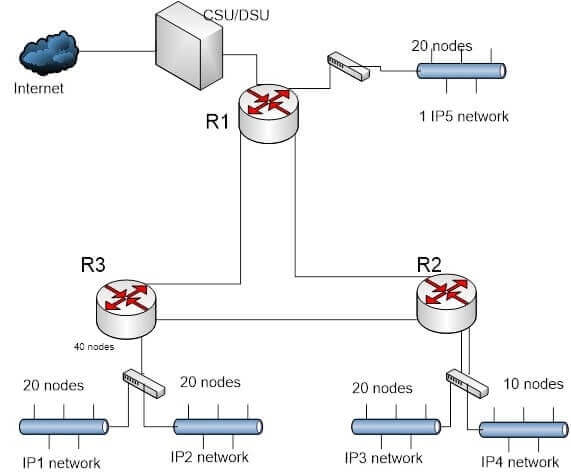Networking Homework Question 1
Test #1
- Assume that an ISP owns the address block 206.0.64.0/18, which represents 16,384 (214) IP addresses
Suppose a client requires 800 host addresses
- How many classful B addresses would need to be assigned?
- How many class C addresses would need to be assigned?
- With CIDR: Assign a /19, or, /20, or, /21, or, /22 block?
- Given a block 192.168.12.0/23. Extend the prefix to /24
Then identify the number of sub-blocks that can be aggregated by the given block above.
- Suppose a network architect decides to use the 172.16.0.0/16 address space to design a corporate network. The architect determines that 64 blocks of addresses with up to 1022 hosts in each are required.
Hence the resulting mask:
and the corresponding prefix:
The network architect assigns address block___ to Division X.
The prefix mask provides Division X with a range of addresses from___through__.
- Aggregate the following address blocs to the highest degree possible.
210.50.132.0/24
210.50.133.0/24
210.50.134.0/24
210.50.135.0/24
- Aggregate the following set of IP/24 network addresses to the highest degree possible.
212.56.146.0/24
212.56.147.0/24
212.56.148.0/24
212.56.149.0/24
- Given a block 130.192.0.0/16
- Design IP Network Scheme to support the number of nodes at three different sites connected by three routers as shown in the diagram below.
IP1 ………. IP5 are sub-blocks that you need to create from 130.192.0.0/16 to support the nodes specified at each of the locations.
At each of the locations, a layer-3 switch connects to the router – thus enabling a VLAN at each of the location.
- Show the routing tables at each of the three routers.
- IP1 thru IP5 are sub-blocks created from the original block 130.192.0.0/16

- Design IP Network Scheme to support the number of nodes at three different sites connected by three routers as shown in the diagram below.

